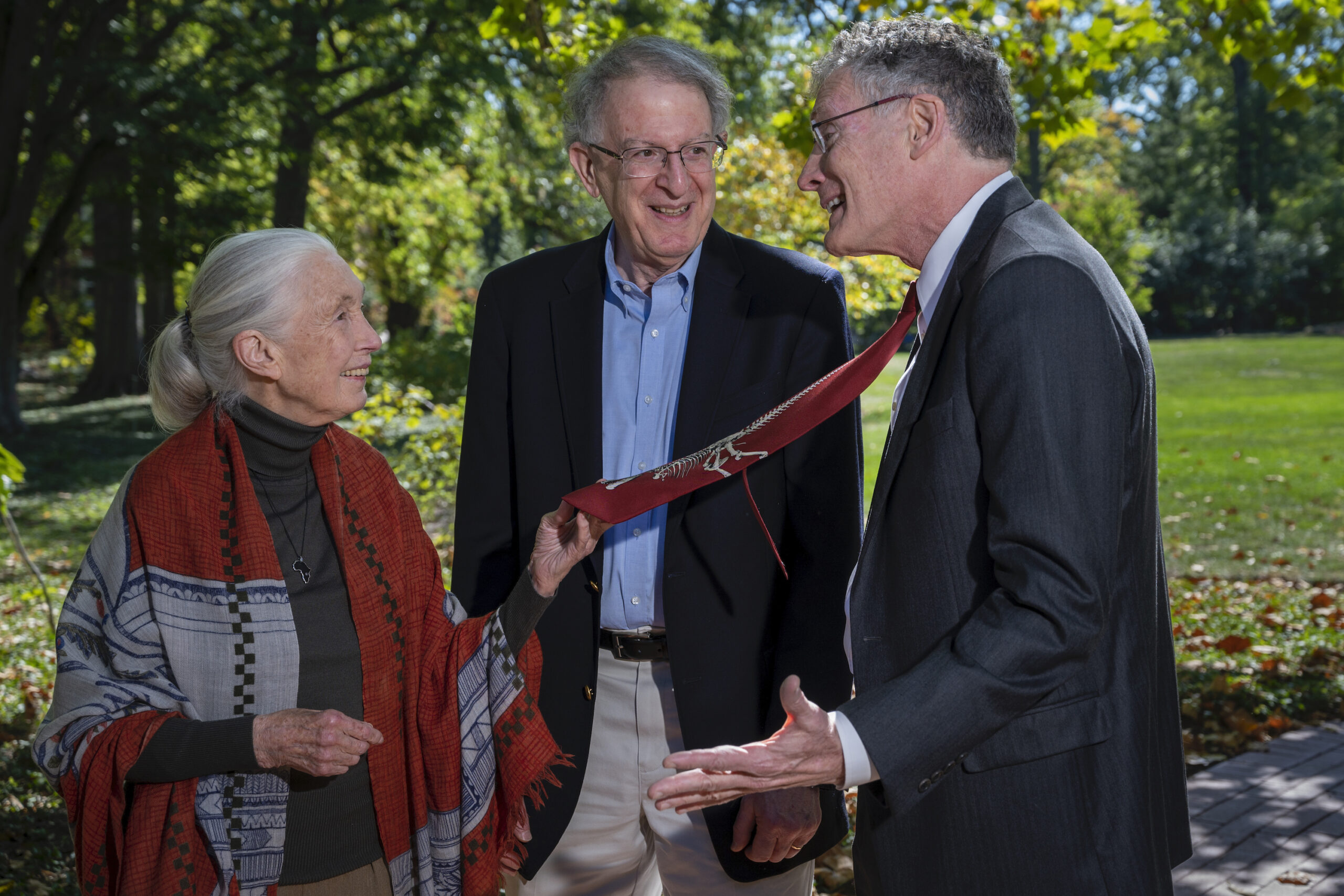The twin threats of climate change and loss of biodiversity on Earth are mobilizing scientists and policy makers to help ensure a future for humanity. The stakes could not be higher. Jonathan Losos puts it this way: “There is nothing more important at this moment in time than the ability to sustain life on our planet.”
This is the key message of the Living Earth Collaborative at Washington University. Launched in 2018, the center is a partnership among three leading institutions in the study of plant and animal science – Washington University, the Missouri Botanical Garden, and the Saint Louis Zoo. Losos returned to St. Louis to serve as its inaugural director.
“It was brilliance on the part of former chancellor Mark Wrighton to create something unlike anything we have in our country,” Losos said of the center. “It was a spectacular opportunity. Being in St. Louis was a bonus.
“When Chancellor Andrew Martin arrived,” Losos added, “two of his major guiding principles for WashU’s future included advancing academic distinction, i.e, areas in which WashU. can excel in ways that our peer institutions cannot. And certainly few other cities possess a great university, a great zoo and one of the world’s leading centers of botanical scholarship. We qualified in spades. The second objective stated, ‘in St. Louis for St. Louis.’ We partnered with local premier institutions, and this approach, which transcends geographic and political boundaries, was the perfect fit for WashU.”
There is nothing more important at this moment in time than the ability to sustain life on our planet.
Jonathan Losos
Losos, an internationally renowned scholar in the field of evolutionary biology, was the perfect fit as the center’s director. He had served on Washington University’s faculty from 1992-2006, when Harvard recruited him as the Lehner Professor for the Study of Latin America, professor of organismic and evolutionary biology, and curator in herpetology at the Museum of Comparative Zoology. Losos recalled, “It was a difficult decision to leave WashU.”
Twelve years later, Losos returned to St. Louis as the William H. Danforth Distinguished University Professor in the Department of Biology in Arts & Sciences and director of the Living Earth Collaborative. “As a native St. Louisan, I am delighted to return to where my love of nature and science first blossomed,” Losos said at the time, “and where the important work of furthering our knowledge of biodiversity and preservation has always been a priority.”
To date, the Living Earth Collaborative works with 187 biodiversity fellows from 15 St. Louis institutions who are studying how biodiversity shapes the complex network of life that we need for food, water, and medicine. The center also helps train scientists, offers a seminar series, hosts meetings and discussions, and provides summer research internships for undergraduates.
More than 30 Living Earth Collaborative seed grants have played an instrumental role in funding important research that is making an impact on the environment. In February 2023, the Republic of Congo agreed to protect a 36-square-mile area called Djéké Triangle by making it part of the adjacent Nouabalé-Ndoki National Park — the only habitat in the world home to habituated groups of both gorillas and chimpanzees. The Djéké Triangle is also home to other large mammals such as forest elephants and bongo antelopes, plus more than 300 bird species and 1,000 plant species.
Biodiversity research led by St. Louis scientists helped inform the decision to include the Djéké Triangle in the existing national park. At least 20 Washington University graduate and undergraduate students participated in the Living Earth Collaborative effort, which included camera surveillance of an area that is considered an epicenter of emerging infectious diseases.
A sampling of other seed-funded projects includes the following:
- Ecological Niche Modeling to examine the interactions between climate-related environmental change, food security, landscape diversity and an emerging infectious disease
- Going Wild in Forest Park: The Movement of Wildlife and Disease in an Urban Food Web
- Socio-economic and cultural adaptation to biodiversity loss and climate change: Analysis and intervention efficacy study in three Madagascar subsistence communities
- Ecological Niche Modeling to examine the interactions between climate-related environmental change, food security, landscape diversity and an emerging infectious disease
- Biodiversity of Freshwater Mussels of the Upper Sangamon River (Illinois): Community Science in Action
“We’re building a strong sense of community and are now taking our work to the next level with a strategic vision process underway,” Losos said. “The timing is very good with the university’s emphasis on biodiversity as an area for greater commitment and investment. More broadly, what we can learn through our studies may ultimately be the key to continuation of life on earth.”
Our World by Degrees: In Search of Refuge
Since 2018, seed grants from the Living Earth Collaborative have helped spark new conservation connections for biodiversity-focused projects led by St. Louis–area researchers — many of which have been realized at the Tyson Research Center.
